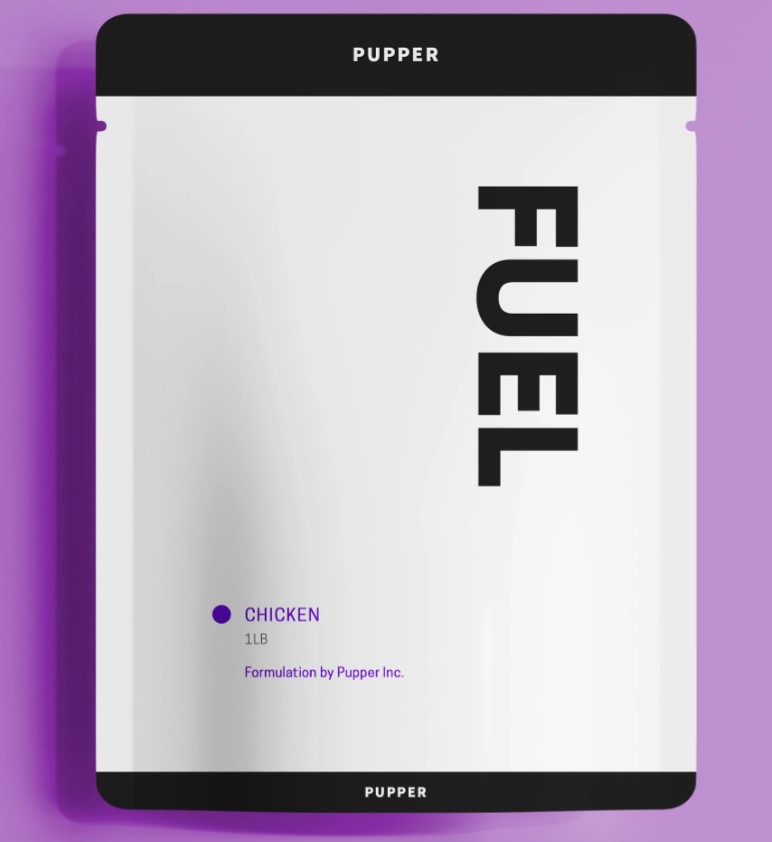When it comes to achieving fat loss goals, protein takes centre stage as a crucial nutrient.
While carbohydrates and fats play their own roles, protein has unique properties that make it an essential component of any effective weight loss plan. Not only does protein help build and repair tissues, but it also plays a significant role in weight management and satiety.
 Source: Photo courtesy of CrossFit Inc.
Source: Photo courtesy of CrossFit Inc.Protein is often referred to as the building block of life, and for good reason. It is composed of amino acids, which are the fundamental units responsible for the growth, maintenance, and repair of various tissues in our bodies. When we consume protein-rich foods, these amino acids are broken down and absorbed, aiding in the regeneration and upkeep of muscles, organs, and other vital structures.
In the context of fat loss, protein becomes even more crucial. One of the primary benefits of a high-protein diet is its impact on weight management. Unlike carbohydrates and fats, protein has a higher thermic effect, meaning that it requires more energy to digest, absorb, and process. As a result, the body burns more calories during protein metabolism compared to the digestion of other macronutrients.
Additionally, protein has a powerful effect on satiety, the feeling of fullness and satisfaction after a meal. When we consume protein, it triggers the release of hormones that signal to our brain that we are satiated and no longer hungry. This helps reduce cravings and unnecessary snacking, ultimately contributing to a lower overall calorie intake and facilitating fat loss.
 Source: Photos Courtesy of CrossFit Inc
Source: Photos Courtesy of CrossFit IncMoreover, protein plays a crucial role in preserving lean muscle mass during weight loss. When we reduce our calorie intake to create a calorie deficit for fat loss, there is a risk of losing muscle mass along with fat. However, by consuming adequate protein, we can mitigate this muscle loss and promote fat loss instead. This is especially important as muscle tissue is metabolically active and helps boost our basal metabolic rate, allowing us to burn more calories even at rest.
Dangers of sugar
5 bench press alternatives
Six pack exercises better than sit ups
5 fitness hacks
In the following sections, we will explore 15 high-protein foods that are not only beneficial for fat loss but also delicious and satisfying. By incorporating these protein-rich options into your diet, you can optimize your weight loss journey, maintain lean muscle mass, and experience the numerous benefits of protein for overall health and well-being. Let’s dive in and discover the power of protein in achieving your fat loss goals.
1 Lean Meats
When it comes to high-protein foods for fat loss, lean meats are an excellent choice. Not only are they packed with muscle-building protein, but they also offer additional benefits that make them an essential part of a well-rounded diet.
One of the key advantages of lean meats is their ability to support fat loss. These meats are generally lower in calories and fat compared to their fattier counterparts, making them ideal for those looking to shed unwanted pounds. By opting for lean meats, you can still meet your protein needs without consuming excessive amounts of saturated fats and calories.
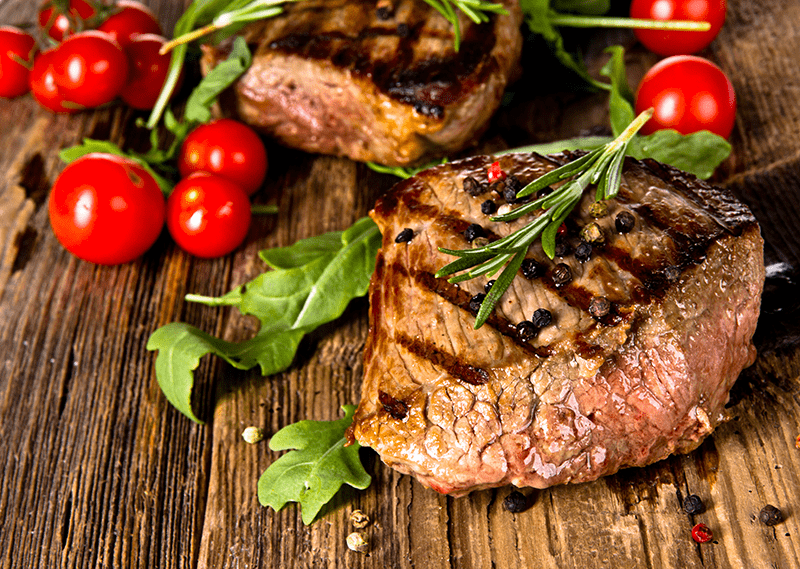
Chicken breast is a prime example of a lean meat that is widely recognized for its nutritional profile and versatility. It is not only an excellent source of high-quality protein but also contains minimal fat. With its mild flavour, chicken breast can be incorporated into a variety of dishes, such as salads, stir-fries, and grilled meals, providing a satisfying and protein-packed option for fat loss enthusiasts.
Turkey is another lean meat that deserves a place on your plate. Like chicken breast, turkey is low in fat and rich in protein, making it an excellent choice for those aiming to reduce body fat. Whether you opt for roasted turkey breast, ground turkey, or turkey cutlets, you can enjoy a lean protein source that adds flavour and texture to your meals.
Lean cuts of beef, such as sirloin or tenderloin, are also noteworthy for their protein content and fat-reducing potential. While beef is often associated with higher fat content, choosing lean cuts allows you to enjoy the benefits of beef without the excess saturated fat. These cuts offer a rich, meaty flavour and can be grilled, broiled, or stir-fried to create delicious and satisfying meals.
Incorporating lean meats into your diet not only provides a substantial protein boost but also offers various essential nutrients. They are excellent sources of vitamins and minerals, including iron, zinc, and B vitamins, which play vital roles in energy production, metabolism, and overall health.
When selecting lean meats, it’s important to consider the cooking methods as well. Opt for grilling, baking, or broiling rather than frying to minimize the addition of extra fats and calories. Additionally, remove visible skin or fat from poultry before cooking to further reduce the fat content.
In conclusion, lean meats are a valuable addition to a fat loss diet. They provide high-quality protein, essential nutrients, and contribute to weight management. Examples like chicken breast, turkey, and lean cuts of beef offer a range of options to suit different tastes and culinary preferences. By including these lean meats in your meals, you can enjoy the benefits of protein while working towards your fat loss goals.
2 Fish and Seafood
When it comes to protein-rich foods for fat loss, fish and seafood are a treasure trove. These aquatic delights not only offer a delectable taste but also provide an abundance of high-quality protein, making them an excellent choice for those seeking to shed unwanted pounds.
Fish, in particular, is known for its impressive protein content. It is a complete protein source, meaning it contains all essential amino acids required by the body. This makes fish a valuable protein option for supporting muscle growth, repair, and overall health.

Salmon is a prime example of a fish that is not only packed with protein but also offers additional nutritional benefits. It is rich in heart-healthy omega-3 fatty acids, which have been associated with numerous health benefits, including reducing inflammation, supporting brain function, and promoting cardiovascular health. Grilled, baked, or pan-seared, salmon provides a flavourful and nutritious protein option for those looking to optimize their fat loss journey.
Another popular protein-rich fish is tuna. Tuna is not only an excellent source of protein but also a lean fish with minimal fat content. It is versatile and can be enjoyed in various forms, such as canned tuna for salads or fresh tuna steaks for grilling or searing. Tuna is also rich in omega-3 fatty acids, making it a nutritious choice for overall well-being.
Shrimp, while technically classified as shellfish, is also worth mentioning in the context of protein-rich seafood. Shrimp is incredibly low in fat and calories while being packed with protein. It is also a good source of various nutrients, including selenium, vitamin B12, and iodine. Whether boiled, grilled, or sautéed, shrimp provides a flavourful and protein-packed addition to salads, stir-fries, or seafood-based dishes.
Other varieties of fish and seafood that are excellent sources of protein include:
- Cod: A mild-tasting white fish that is low in fat and calories, making it a versatile option for various preparations.
- Halibut: A lean fish with a firm texture and delicate flavour, rich in protein and low in calories.
- Tilapia: A budget-friendly fish that is low in fat and calories but still offers a decent amount of protein.
- Mussels: These shellfish are not only high in protein but also provide essential nutrients like iron and vitamin B12.
- Crab: A lean source of protein that is also low in fat and calories, making it a delicious option for seafood lovers.
Incorporating fish and seafood into your diet not only boosts your protein intake but also provides a range of health benefits. These include supporting heart health, brain function, and reducing inflammation. Additionally, fish and seafood offer a wide variety of flavours and textures, allowing for culinary creativity while achieving your fat loss goals.
When selecting fish and seafood, opt for fresh, wild-caught varieties whenever possible. These tend to have a higher nutrient content and fewer environmental contaminants compared to farmed options. It’s also essential to consider sustainable fishing practices to support the health of our oceans and marine ecosystems.
In conclusion, fish and seafood are excellent sources of protein for individuals focusing on fat loss. Varieties like salmon, tuna, shrimp, and others not only provide high-quality protein but also offer additional nutritional benefits. By incorporating these protein-rich options into your diet, you can enjoy delicious meals while working towards your fat loss goals.
3 Eggs
Eggs are a nutritional powerhouse that deserves a prominent place in any discussion about high-protein foods for fat loss. These versatile orbs not only pack a punch when it comes to protein but also offer a wide range of essential nutrients, making them a staple in many diets.
First and foremost, eggs are a fantastic source of high-quality protein. In fact, eggs are often considered the gold standard for protein quality, as they contain all the essential amino acids required by the body. A single large egg provides approximately 6 grams of protein, making it an efficient and convenient way to meet your daily protein needs.
 Source: Brooke Lark / Unsplash
Source: Brooke Lark / UnsplashBut the nutritional value of eggs doesn’t stop at protein. Eggs are also rich in essential vitamins and minerals. They contain vitamins A, D, E, and B vitamins, along with minerals such as iron, selenium, and choline. Choline, in particular, is an important nutrient that plays a role in brain health and development.
One of the remarkable aspects of eggs is their versatility. They can be prepared in countless ways, allowing for a wide range of dishes and meal options. Whether you prefer them scrambled, poached, boiled, or in omelets, eggs can be tailored to suit different tastes and preferences.
For breakfast, eggs can take centre stage, providing a protein-packed start to your day. A simple omelet loaded with vegetables and a sprinkle of cheese or a boiled egg paired with whole-grain toast offers a satisfying and nutritious morning meal.
Eggs also shine as a protein source in salads and sandwiches. Hard-boiled eggs can be chopped and added to green salads or used as a filling in wraps and sandwiches. They lend a creamy texture and a boost of protein to these dishes, making them more satisfying and nutritious.
In baking, eggs serve as a binding agent and contribute to the structure and texture of various recipes. From cakes and cookies to muffins and quiches, eggs play a crucial role in creating delicious and well-textured baked goods.
Furthermore, eggs can be transformed into more substantial protein-based dishes, such as frittatas and egg casseroles. By combining eggs with an assortment of vegetables, lean meats, and cheeses, you can create a protein-rich dish that can be enjoyed for breakfast, lunch, or dinner.
It’s important to note that when consuming eggs, it’s advisable to choose high-quality sources. Free-range or pasture-raised eggs are generally preferred, as they come from hens that have access to open spaces and a varied diet, resulting in eggs that are higher in omega-3 fatty acids and other beneficial nutrients.
In conclusion, eggs are a nutrient-dense food that offers not only a significant protein content but also a range of essential vitamins and minerals. Their versatility allows for endless culinary possibilities, making them suitable for various dishes and meal options. By incorporating eggs into your diet, you can enjoy a delicious and protein-rich ingredient that supports your fat loss goals while nourishing your body with essential nutrients.
4 Greek Yogurt
Greek yogurt has gained immense popularity in recent years, and for good reason. This creamy and tangy delight is not only delicious but also packs a powerful punch of protein, making it an excellent choice for individuals focusing on fat loss. Additionally, Greek yogurt offers several benefits for gut health due to its probiotic content.
 Source: Nappy on Pexels
Source: Nappy on PexelsWhen it comes to protein content, Greek yogurt stands out among other dairy products. It undergoes a straining process that removes whey, resulting in a thicker consistency and a higher concentration of protein. A typical serving of Greek yogurt (about 6 ounces) can provide around 15-20 grams of protein, making it a valuable addition to a high-protein diet.
The high protein content of Greek yogurt offers several benefits for fat loss. Protein is known to be highly satiating, meaning it helps you feel fuller for longer periods, reducing the likelihood of overeating or snacking on calorie-dense foods. Additionally, protein has a higher thermic effect, requiring more energy for digestion and metabolism, which can aid in calorie burning and weight management.
Beyond its protein content, Greek yogurt also provides significant benefits for gut health. Greek yogurt contains beneficial bacteria known as probiotics. These live microorganisms help promote a healthy balance of gut bacteria, which is crucial for proper digestion and overall well-being.
The probiotic benefits of Greek yogurt include improving gut flora diversity, enhancing nutrient absorption, and supporting immune function. Research suggests that consuming probiotics can also help alleviate symptoms of digestive issues such as bloating, gas, and diarrhea.
It’s important to note that not all Greek yogurts on the market contain probiotics. When selecting Greek yogurt, look for varieties that explicitly state they contain live and active cultures or probiotics. This ensures that you’re reaping the gut health benefits associated with these beneficial bacteria.
Greek yogurt’s versatility is another reason for its popularity. It can be enjoyed plain, topped with fruits and nuts, or incorporated into various recipes. Greek yogurt can be used as a protein-rich base for smoothies, a creamy topping for oatmeal or pancakes, or a substitute for higher-fat ingredients in baking and cooking.
When selecting Greek yogurt, opt for plain or unsweetened varieties to avoid added sugars. If desired, you can sweeten it naturally by adding fresh fruits or a drizzle of honey. Additionally, be mindful of portion sizes, as Greek yogurt can be calorie-dense depending on the brand and added ingredients.
In summary, Greek yogurt is an excellent choice for individuals seeking a high-protein food for fat loss. Its protein content helps promote satiety and supports weight management. Furthermore, Greek yogurt’s probiotic content contributes to gut health, aiding digestion and enhancing overall well-being. By incorporating Greek yogurt into your diet, you can enjoy a nutritious and versatile food that contributes to both your protein intake and gut health.
5 Cottage Cheese
Cottage cheese, with its creamy texture and mild flavour, has long been recognized as a protein powerhouse and a versatile ingredient in the culinary world. It offers an impressive protein content and a low-calorie profile, making it an ideal choice for those aiming for fat loss. Additionally, cottage cheese can be enjoyed in a variety of sweet and savoury dishes, further enhancing its appeal.

One of the notable features of cottage cheese is its high protein content. It is a dairy product that provides a substantial amount of complete protein, containing all the essential amino acids needed by the body. A half-cup serving of cottage cheese typically delivers around 12-15 grams of protein, depending on the brand and fat content.
The protein-rich nature of cottage cheese brings several benefits to individuals focusing on fat loss. Protein is known for its satiating effect, helping to curb hunger and promote feelings of fullness. By including cottage cheese in your meals or snacks, you can help control cravings and manage your calorie intake more effectively.
Moreover, cottage cheese is relatively low in calories compared to many other protein sources. A half-cup serving of cottage cheese usually contains around 80-120 calories, depending on the fat content. This low-calorie nature makes cottage cheese an attractive option for those seeking to reduce overall calorie intake while still meeting their protein needs.
Cottage cheese’s versatility adds to its appeal. It can be enjoyed in both sweet and savoury dishes, allowing for a wide range of culinary possibilities. Let’s explore some examples:
In sweet dishes, cottage cheese can be a nutritious substitute for higher-calorie ingredients. It can be used as a base for smoothies, providing a creamy texture and a protein boost. Mixing cottage cheese with fruits, such as berries or peaches, creates a satisfying and protein-packed snack or breakfast option.
Cottage cheese can also be incorporated into baked goods. It can be used as a filling in pancakes or crepes, adding a creamy element to the dish. Additionally, cottage cheese can be blended with a touch of honey and vanilla extract to create a nutritious and protein-rich dessert topping.
In savoury dishes, cottage cheese can serve as a protein-packed ingredient. It can be used as a topping for baked potatoes or salads, adding a creamy and tangy element. Cottage cheese can also be mixed with herbs and spices to create a flavourful dip or spread for vegetables or whole-grain crackers.
Cottage cheese can even be used as a substitute for ricotta cheese in recipes such as lasagna or stuffed pasta shells, providing a lighter and higher-protein option.
When purchasing cottage cheese, opt for varieties with lower fat content if you are watching your calorie intake. However, keep in mind that cottage cheese can be naturally higher in sodium, so if you’re concerned about sodium intake, choose low-sodium options or rinse the cottage cheese under cold water before consuming.
In conclusion, cottage cheese is a protein-rich and low-calorie food that offers versatility in both sweet and savoury dishes. Its high protein content contributes to satiety and supports fat loss goals. By incorporating cottage cheese into your diet, you can enjoy a nutrient-dense ingredient that enhances the nutritional profile of various meals and snacks while providing a creamy and satisfying experience.
6 Beans and Legumes
Beans and legumes have long been recognized as a staple in many traditional diets around the world. These humble plant-based foods not only offer a rich source of protein but also provide a substantial amount of dietary fibre. Including beans and legumes in your fat loss diet can contribute to both satiety and overall health.
Protein is a vital nutrient for supporting muscle growth and repair, and beans and legumes are an excellent plant-based source of this macronutrient. While they may not provide as much protein as animal-based foods, they are still considered a valuable protein option, especially for those following a vegetarian or vegan diet.
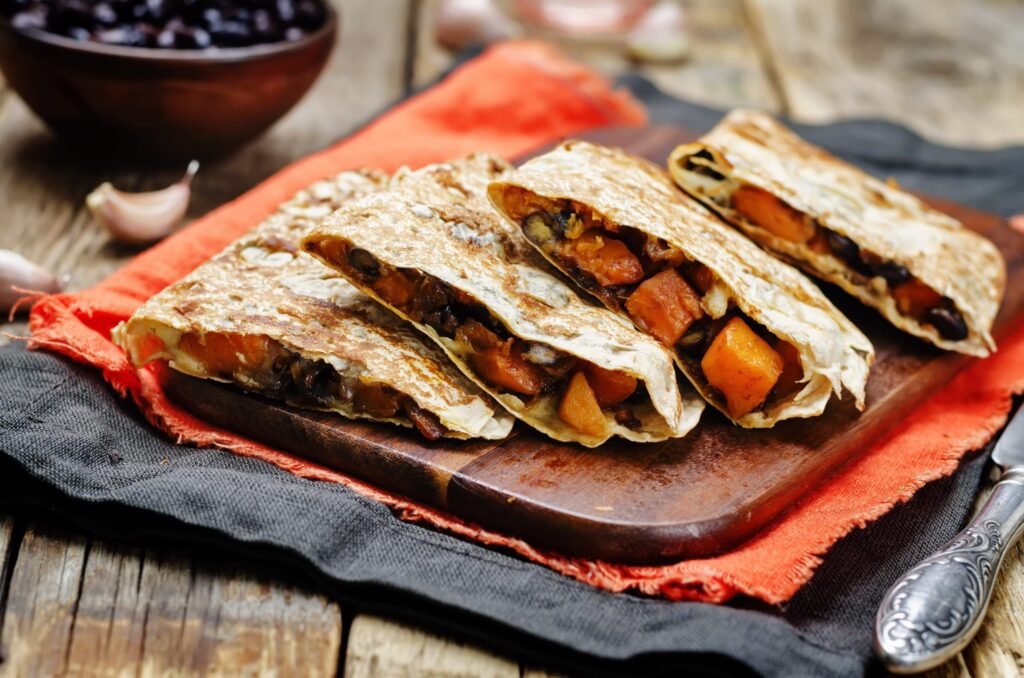
The protein content of beans and legumes varies slightly depending on the variety. Generally, they offer around 15-20 grams of protein per cooked cup. This protein content, combined with their low fat and cholesterol levels, makes them a nutrient-dense choice for individuals aiming to shed excess body fat.
In addition to protein, beans and legumes are rich in dietary fibre. Fibre plays a crucial role in promoting feelings of fullness and supporting healthy digestion. By including beans and legumes in your meals, you can help regulate your appetite and potentially reduce overall calorie intake.
Fibre also contributes to stable blood sugar levels, as it slows down the digestion and absorption of carbohydrates. This can be beneficial for managing cravings and preventing spikes in blood sugar levels, which can lead to overeating and weight gain.
Several types of beans and legumes stand out as exceptional sources of protein:
- Lentils: Lentils are versatile legumes that come in various colours, such as green, brown, and red. They are not only rich in protein but also offer an abundant amount of dietary fibre. Lentils can be incorporated into soups, stews, salads, or even used as a meat substitute in dishes like lentil burgers or meatless meatballs.
- Chickpeas: Chickpeas, also known as garbanzo beans, are a popular choice due to their protein content and versatility. They can be used in a variety of dishes, such as salads, hummus, stews, and curries. Roasted chickpeas also make for a crunchy and protein-rich snack.
- Black Beans: Black beans are known for their deep colour and distinct flavour. They are a great source of protein, fibre, and several essential minerals. Black beans can be used in a wide range of recipes, including soups, burritos, salads, and even brownies.
- Other high-protein beans and legumes include kidney beans, pinto beans, navy beans, and edamame (young soybeans). Each variety offers its unique taste and texture, allowing for culinary creativity while adding a protein boost to your meals.
When incorporating beans and legumes into your diet, it’s best to cook them from scratch rather than relying on canned versions. This allows you to control the added salt and other ingredients. Soaking dried beans before cooking can also help improve their digestibility.
In conclusion, beans and legumes are an excellent source of plant-based protein and dietary fibre. They can be a valuable addition to a fat loss diet, helping to promote satiety and support healthy digestion. Lentils, chickpeas, black beans, and other varieties offer numerous culinary possibilities, allowing you to enjoy delicious and protein-rich meals while working towards your fat loss goals.
7 Tofu and Tempeh
Discuss the protein-rich nature of tofu and tempeh, suitable for vegetarians and vegans
Explain how tofu and tempeh can be incorporated into various dishes and cuisines
Tofu and tempeh are two plant-based protein powerhouses that have gained popularity, particularly among vegetarians and vegans. Both tofu and tempeh offer an abundance of protein and can be incorporated into a wide variety of dishes and cuisines, making them versatile options for individuals seeking a high-protein diet while avoiding animal products.
Tofu, also known as bean curd, is made from soybeans and has a mild flavour that absorbs the flavours of the ingredients it is cooked with. It is an excellent source of plant-based protein, providing around 8-10 grams of protein per 3-ounce serving. Tofu is also low in saturated fat and cholesterol, making it a heart-healthy protein choice.
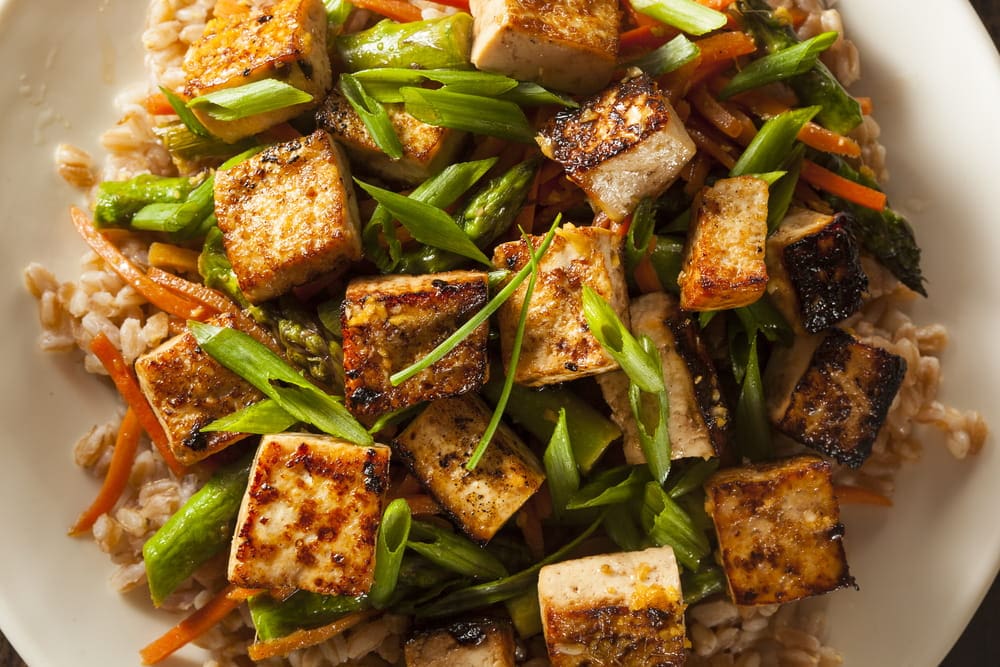
Tempeh, on the other hand, is a fermented soybean product that has a nutty and earthy flavour. It offers a higher protein content compared to tofu, typically providing about 15-20 grams of protein per 3-ounce serving. Tempeh is also a good source of dietary fibre and contains beneficial probiotics, which can support gut health.
The protein-rich nature of tofu and tempeh makes them valuable options for individuals looking to increase their protein intake, particularly vegetarians and vegans who may have limited animal-based protein sources in their diet. Protein is essential for muscle growth, repair, and overall health, and these plant-based alternatives provide an excellent option to meet protein requirements.
One of the advantages of tofu and tempeh is their versatility in the kitchen. They can be prepared in various ways and incorporated into a wide range of dishes, allowing for culinary creativity and exploration of different cuisines.
Tofu can be baked, stir-fried, grilled, or even used in soups and stews. Its ability to absorb flavours makes it a versatile ingredient that can be marinated or seasoned with herbs, spices, and sauces. Tofu can be diced and added to stir-fries or curries, crumbled and used as a substitute for scrambled eggs, or blended into smoothies for added creaminess and protein.
Tempeh, with its unique texture and flavour, is often sliced or crumbled and can be used in stir-fries, sandwiches, or salads. It can be marinated and grilled, sautéed with vegetables, or crumbled and used as a protein-rich topping for pizzas or tacos. Tempeh can also be incorporated into vegetarian burgers or used as a meat substitute in various recipes.
Both tofu and tempeh can be found in different forms, such as firm, extra firm, or silken tofu, and plain or flavoured tempeh. This variety allows for versatility in cooking and adapting to different culinary preferences.
When purchasing tofu and tempeh, opt for organic and non-genetically modified options whenever possible. It’s also essential to check ingredient labels to ensure the products are free from unnecessary additives and preservatives.
In conclusion, tofu and tempeh are protein-rich alternatives suitable for vegetarians and vegans, providing a valuable source of plant-based protein. They offer versatility in cooking and can be incorporated into various dishes and cuisines. By exploring different cooking methods and flavour profiles, you can enjoy the benefits of tofu and tempeh while creating delicious and protein-packed meals that support your dietary and fat loss goals.
8 Quinoa
Quinoa, pronounced “keen-wah,” has gained tremendous popularity in recent years due to its exceptional nutritional profile and versatility in the kitchen. Not only is quinoa a great source of protein, but it is also considered a complete protein, making it a valuable addition to any diet, especially for those seeking a high-protein option.
Protein is essential for various bodily functions, including muscle repair, immune support, and hormone production. Quinoa stands out among other grains and seeds due to its impressive protein content. It contains about 8 grams of protein per cooked cup, making it a protein-rich food, particularly for plant-based diets.

What sets quinoa apart is its status as a complete protein source. While most plant-based proteins lack one or more essential amino acids, quinoa contains all nine essential amino acids that our bodies cannot produce on their own. This makes it comparable to animal-based proteins and a valuable protein source for vegetarians, vegans, and individuals looking to reduce their meat consumption.
Quinoa’s versatility in the kitchen is another reason for its popularity. It can be incorporated into various dishes, ranging from salads to side dishes and main courses. Let’s explore some ways you can enjoy quinoa:
Salads: Quinoa makes a nutritious and protein-packed base for salads. Simply cook the quinoa according to the package instructions, let it cool, and toss it with fresh vegetables, herbs, and a flavourful dressing. You can also add ingredients like roasted vegetables, nuts, seeds, or feta cheese to enhance the flavour and texture.
Side Dishes: Quinoa can be used as a substitute for rice or pasta in side dishes. It can be cooked with broth or seasoned water to add flavour, and then served alongside roasted or grilled meats, fish, or vegetables. Quinoa can also be seasoned with herbs and spices to create a flavourful pilaf or mixed with roasted vegetables for a satisfying side dish.
Main Courses: Quinoa can take centre stage in main courses, offering a hearty and nutritious alternative to traditional grain-based dishes. It can be used to stuff vegetables like bell peppers or squash, or as a base for grain bowls, stir-fries, or Buddha bowls. Quinoa can also be mixed with beans or lentils to create vegetarian patties or used in place of meat in stuffed cabbage rolls or meatballs.
Beyond its protein content, quinoa is a good source of dietary fibre, providing about 5 grams per cooked cup. This fibre content contributes to feelings of fullness, aids in digestion, and helps regulate blood sugar levels.
When purchasing quinoa, you can find it in different colours, including white, red, and black. All varieties offer similar nutritional benefits, so feel free to choose based on personal preference or the colour that complements your recipe.
In conclusion, quinoa is a versatile and protein-rich grain that offers numerous benefits for those seeking a high-protein diet. Its status as a complete protein source makes it particularly valuable for vegetarians, vegans, and individuals aiming to increase their protein intake. From salads to side dishes and main courses, quinoa’s adaptability in various recipes allows you to enjoy its nutritional benefits while adding texture and flavour to your meals.
9 Seeds
Seeds are small but mighty powerhouses of nutrition that can provide a wide range of health benefits. They are not only rich in healthy fats, fibre, vitamins, and minerals but also offer a notable amount of protein. Incorporating seeds into your diet can be an excellent way to boost your protein intake while reaping their nutritional benefits.
Protein is essential for building and repairing tissues, supporting immune function, and maintaining overall health. While seeds may not be as protein-dense as animal-based sources, they still contribute a significant amount of plant-based protein to your diet.
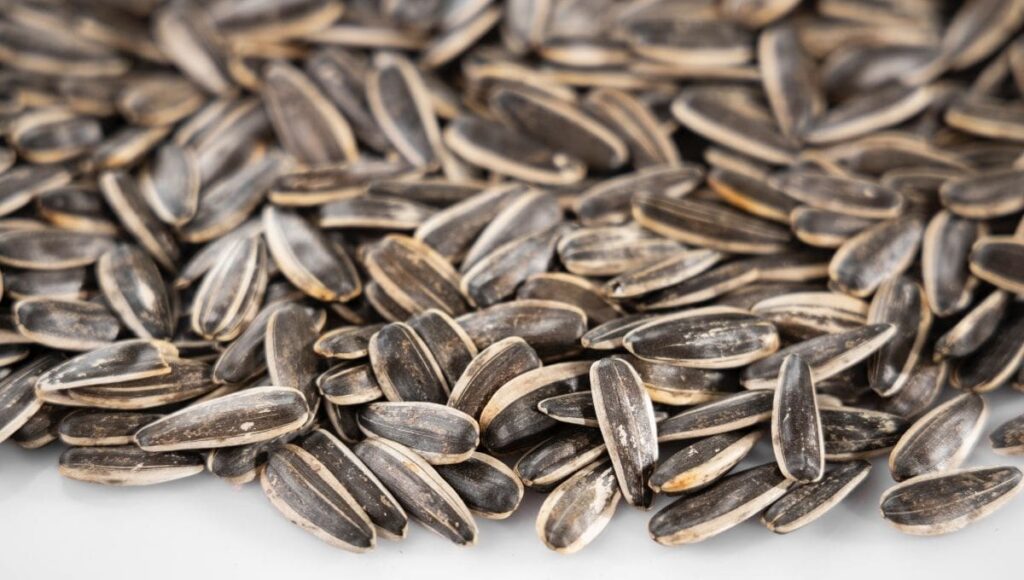 Source: engin akyurt / Unsplash
Source: engin akyurt / UnsplashLet’s take a closer look at some high-protein seeds and their nutritional benefits:
Chia Seeds: Chia seeds have gained popularity in recent years due to their nutritional profile and versatility. These tiny black or white seeds are a fantastic source of protein, providing around 4 grams of protein per ounce. In addition to protein, chia seeds are rich in omega-3 fatty acids, dietary fibre, and various micronutrients. They can be added to smoothies, yogurt, oatmeal, or used as an egg substitute in baking.
Flaxseeds: Flaxseeds, also known as linseeds, are another nutritional powerhouse. They are an excellent source of protein, with around 5 grams per tablespoon. Flaxseeds are also rich in omega-3 fatty acids, fibre, and lignans, which have antioxidant properties. It’s important to note that whole flaxseeds are more challenging for the body to digest, so it’s recommended to grind them before consumption to reap their full nutritional benefits. Ground flaxseeds can be added to smoothies, cereal, baked goods, or used as an egg substitute.
Hemp Seeds: Hemp seeds are derived from the Cannabis sativa plant and are known for their impressive nutritional profile. They offer a complete source of protein, containing all nine essential amino acids that the body needs. With around 9-10 grams of protein per ounce, hemp seeds are a great addition to a high-protein diet. They are also rich in omega-3 and omega-6 fatty acids, fibre, and various minerals. Hemp seeds have a slightly nutty flavour and can be sprinkled over salads, added to smoothies, or used in homemade energy bars.
Other seeds that provide notable amounts of protein include pumpkin seeds, sunflower seeds, and sesame seeds. These seeds offer a range of flavours and textures, making them versatile for use in both savoury and sweet dishes.
In addition to their protein content, seeds are packed with other beneficial nutrients. They are often rich in healthy fats, particularly omega-3 fatty acids, which support brain health, heart health, and reduce inflammation in the body. Seeds are also a good source of dietary fibre, promoting healthy digestion, regulating blood sugar levels, and contributing to feelings of fullness.
When incorporating seeds into your diet, it’s best to consume them in their raw, unsalted, and unflavoured form to maximize their nutritional value. They can be sprinkled over salads, added to smoothies, incorporated into baked goods, or used as a crunchy topping for yogurt or cereal.
In conclusion, seeds are a nutrient-dense addition to a balanced diet, offering protein, healthy fats, fibre, and various vitamins and minerals. Chia seeds, flaxseeds, hemp seeds, and other high-protein seeds can enhance the nutritional profile of your meals and snacks. By incorporating these seeds into your diet, you can enjoy their nutritional benefits while adding flavour, texture, and a protein boost to your favourite dishes.
10 Nuts and Nut Butters
Nuts and nut butters are not only delicious but also provide a wealth of nutritional benefits. They are packed with protein, healthy fats, vitamins, minerals, and antioxidants, making them a valuable addition to a high-protein diet. Let’s explore the protein content and healthy fats found in nuts, as well as some examples of protein-rich nuts and their corresponding nut butters.
Protein plays a crucial role in various bodily functions, including muscle repair, hormone production, and immune support. Nuts are known for their protein content, although the amount can vary slightly among different types. On average, nuts contain about 5-7 grams of protein per ounce.
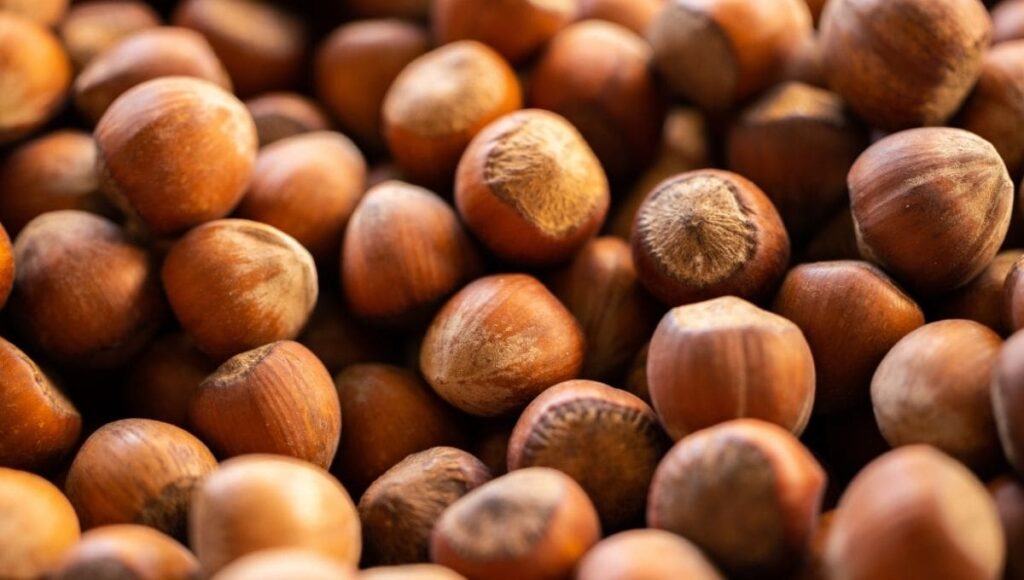 Source: engin akyurt / Unsplash
Source: engin akyurt / UnsplashOne of the standout features of nuts is their high concentration of healthy fats. While they do contain fats, these fats are predominantly unsaturated fats, which are considered beneficial for heart health and overall well-being. The specific types of healthy fats found in nuts include monounsaturated fats and polyunsaturated fats, including omega-3 fatty acids.
Let’s take a look at some protein-rich nuts and their corresponding nut butters:
Almonds: Almonds are not only a great source of protein but also contain a wide range of nutrients. With approximately 6 grams of protein per ounce, almonds are a satisfying and nutritious snack. They are also rich in vitamin E, magnesium, and fibre. Almond butter, made from ground almonds, provides a creamy and delicious option for those looking for an alternative to peanut butter.
Peanuts: Although technically legumes, peanuts are often categorized as nuts due to their similar nutritional profile. Peanuts offer an impressive protein content, providing around 7 grams of protein per ounce. They are also rich in monounsaturated fats, vitamin E, and various minerals. Peanut butter, a classic and beloved spread, is made from ground peanuts and is a convenient way to incorporate protein into your diet.
Cashews: Cashews are a creamy and slightly sweet nut that offers a good amount of protein, with about 5 grams per ounce. They are also a good source of monounsaturated fats, magnesium, and copper. Cashew butter, made from roasted cashews, provides a smooth and velvety alternative to other nut butters.
Other protein-rich nuts include walnuts, pistachios, and Brazil nuts, each offering their unique nutritional profile.
In addition to their protein content, nuts and nut butters are rich in other beneficial nutrients. They are a good source of dietary fibre, which aids in digestion, supports satiety, and helps regulate blood sugar levels. Nuts also contain vitamins, such as vitamin E and B vitamins, as well as minerals like magnesium, zinc, and potassium.
Incorporating nuts and nut butters into your diet is simple and enjoyable. They can be eaten as a snack on their own, sprinkled over salads or yogurt, added to baked goods, or used as a base for sauces and spreads. Nut butters can be spread on toast, used as a dip for fruits or vegetables, or added to smoothies for a protein boost.
When selecting nuts and nut butters, it’s best to choose unsalted or lightly salted varieties to minimize sodium intake. Opt for natural nut butters without added sugars or hydrogenated oils to ensure you are getting the most nutritional benefits.
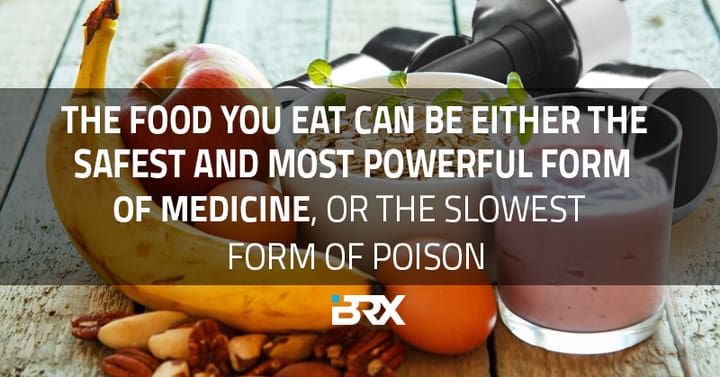
In conclusion, nuts and nut butters are a protein-rich and nutrient-dense addition to any diet. With their combination of protein, healthy fats, vitamins, and minerals, they provide a satisfying and nourishing snack or ingredient. By incorporating a variety of nuts and nut butters into your meals and snacks, you can enjoy their delicious flavours while reaping the nutritional benefits they offer.
11 Whey Protein
Whey protein is a popular and widely used protein supplement derived from milk. It offers a convenient and effective way to increase protein intake, making it a valuable tool for individuals looking to optimize their protein consumption for various purposes, including muscle building, post-workout recovery, and weight management.
One of the key benefits of whey protein is its high biological value, which means that it contains all the essential amino acids required by the body. Whey protein is considered a complete protein source, and it is quickly and easily absorbed by the body, making it an excellent choice for post-workout recovery.
 Source: Unsplash
Source: UnsplashHere are some benefits of incorporating whey protein into your diet:
Convenient and Effective: Whey protein supplements come in various forms, including powder, making them easy to incorporate into your daily routine. Whey protein powder can be quickly mixed with water or other liquids to create a protein shake, making it a convenient option for a quick protein boost.
Muscle Building and Recovery: Protein is essential for muscle growth and repair. Whey protein, particularly when consumed after resistance training, provides a rich source of amino acids necessary for muscle protein synthesis. It helps support muscle recovery, reduce muscle damage, and promote muscle growth and strength.
Weight Management: Protein plays a crucial role in weight management by promoting satiety and reducing hunger cravings. Whey protein can help increase feelings of fullness, which may aid in controlling calorie intake and reducing overall food consumption. Incorporating whey protein into meals or snacks can help support weight loss or weight maintenance goals.
Nutritional Profile: In addition to its protein content, whey protein is also a good source of essential amino acids, including branched-chain amino acids (BCAAs), which are known for their role in muscle protein synthesis. Whey protein supplements also often contain vitamins and minerals that can contribute to overall nutritional intake.
Incorporating whey protein into your diet can be done in various ways:
Protein Shakes and Smoothies: Whey protein powder can be mixed with water, milk, or plant-based milk alternatives to create a protein shake or smoothie. This is a popular option for a quick and convenient post-workout snack or meal replacement.
Recipes: Whey protein powder can be used as an ingredient in recipes to boost their protein content. It can be added to baked goods such as muffins, pancakes, or protein bars, providing a protein-packed twist to traditional recipes.
Protein-Fortified Foods: Some commercially available foods, such as protein bars, granola bars, or yogurts, are fortified with whey protein. These products offer a convenient way to increase protein intake on the go.
When choosing a whey protein supplement, it’s important to consider factors such as quality, taste, and personal dietary preferences. There are different types of whey protein available, including whey protein concentrate and whey protein isolate, each with its own characteristics and processing methods.
It’s worth noting that individuals with lactose intolerance or dairy allergies should opt for whey protein isolates or other non-dairy protein alternatives to avoid any potential digestive issues.
In conclusion, whey protein is a convenient and effective protein source with numerous benefits, including muscle building, recovery, and weight management. Whey protein supplements can be easily incorporated into shakes, smoothies, and recipes, providing a quick and efficient way to increase protein intake. Whether you’re an athlete, fitness enthusiast, or simply looking to optimize your protein consumption, whey protein can be a valuable addition to your diet.
12 Edamame
Edamame, young soybeans that are harvested before they fully mature, are not only delicious but also offer a host of nutritional benefits. They are a popular snack and ingredient in various cuisines, known for their vibrant green colour and unique flavour.
Edamame provides an excellent source of plant-based protein and a range of other essential nutrients, making it a valuable addition to a balanced diet.
Here are some key points highlighting the protein content and nutritional benefits of edamame:
Protein Powerhouse: Edamame is a remarkable source of plant-based protein. In fact, it is one of the few plant-based foods that provides a complete protein profile, meaning it contains all the essential amino acids that the body needs. A one-cup serving of edamame can offer approximately 17 grams of protein, making it an excellent option for individuals following a vegetarian or vegan diet or anyone looking to increase their protein intake.

Rich in Fibre: Edamame is also a good source of dietary fibre. Fibre plays a crucial role in supporting digestive health, regulating blood sugar levels, and promoting satiety. A one-cup serving of edamame can provide around 8 grams of fibre, contributing to a healthy digestive system and helping to control appetite.
Nutrient Dense: Edamame is packed with essential vitamins and minerals. It is a good source of folate, vitamin K, vitamin C, and iron. Folate is important for cell growth and development, while vitamin K is essential for blood clotting and bone health. Vitamin C acts as an antioxidant, supporting immune function, and iron is crucial for oxygen transport in the body.
Heart-Healthy: Edamame contains unsaturated fats, including omega-3 fatty acids, which are known for their heart-protective properties. These healthy fats can help lower cholesterol levels, reduce inflammation, and support cardiovascular health.
In addition to its nutritional benefits, edamame is incredibly versatile and can be enjoyed in various ways:
Snacks: Steamed or boiled edamame pods make a satisfying and nutritious snack. Simply sprinkle them with a little salt or enjoy them as they are. The pods are fun to pop open and the beans can be easily removed with the teeth.
Salads: Edamame adds a vibrant burst of colour and texture to salads. Toss cooked edamame beans into green salads, grain salads, or pasta salads to increase their protein content and enhance their overall nutritional profile.
Stir-fries and Stir-fried Rice: Edamame can be a delicious addition to stir-fries, providing a satisfying crunch and a boost of protein. Add them to vegetable stir-fries, rice dishes, or noodle dishes for a nutritious and filling meal.
Sides and Appetizers: Serve steamed edamame as a side dish alongside your favourite protein or use them as a healthy appetizer option for gatherings or parties.
To enjoy edamame, you can find it in the frozen section of most grocery stores. It is typically sold in the pod or shelled form. If you opt for the pod variety, make sure to cook them by boiling or steaming them until they are tender. Shelled edamame can be quickly cooked in boiling water or microwaved.
In conclusion, edamame is a protein-rich and nutrient-dense food that offers a range of health benefits. Its high protein content, fibre, and essential nutrients make it an excellent addition to a balanced diet. With its versatility and delicious flavour, edamame can be enjoyed in salads, stir-fries, snacks, and various other dishes. Incorporate this vibrant and nutritious legume into your meals to reap its many nutritional benefits and add an exciting element to your
13 Low-Fat Dairy Products
Low-fat dairy products, such as milk and cheese, are not only a great source of protein but also offer a range of essential nutrients. They provide an excellent option for individuals looking to increase their protein intake while managing their fat consumption, making them a valuable component of a fat loss diet.
Let’s explore the protein content of low-fat dairy products and the importance of choosing low-fat options for fat loss.
Protein Content: Low-fat dairy products are known for their significant protein content. Protein is essential for various bodily functions, including muscle building, repair, and maintenance. Milk, for example, is a complete protein source, meaning it contains all the essential amino acids necessary for optimal health. A cup of skim milk can provide approximately 8 grams of protein, while a cup of low-fat cottage cheese can offer about 28 grams of protein.
Muscle Building and Maintenance: Consuming an adequate amount of protein is crucial for individuals looking to build and maintain lean muscle mass. Including low-fat dairy products in your diet can help meet your protein needs and support muscle recovery and growth, especially when combined with regular resistance exercise.
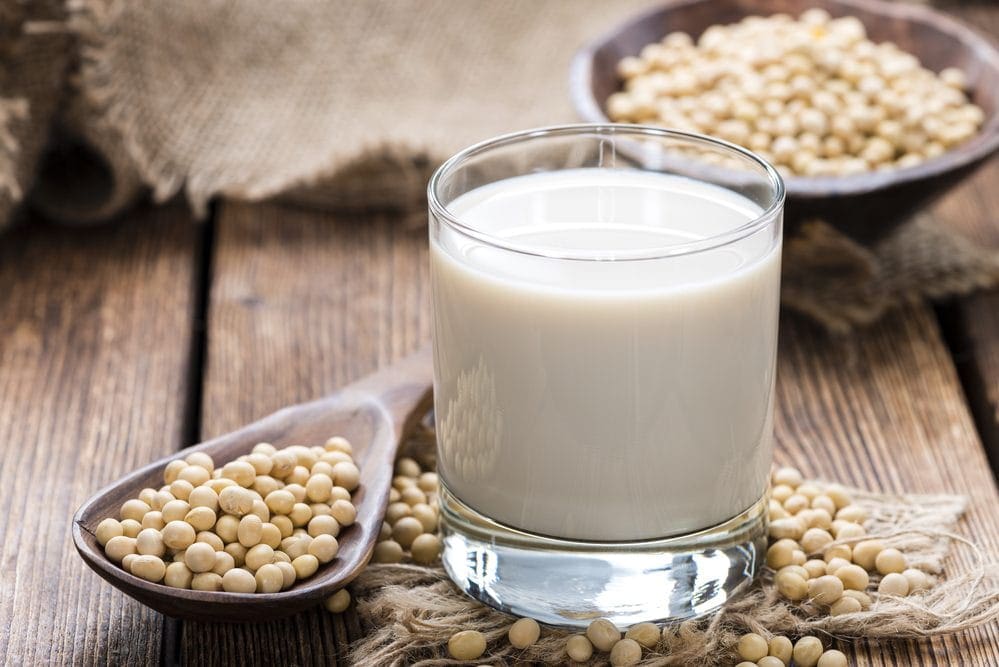
Calcium and Bone Health: Low-fat dairy products are also an excellent source of calcium, a mineral essential for bone health and strength. Adequate calcium intake, combined with vitamin D, helps promote strong bones and may reduce the risk of osteoporosis later in life.
Low-Fat Options for Fat Loss: When it comes to fat loss, choosing low-fat dairy products can be beneficial. While dairy products contain essential nutrients, they can also be a significant source of saturated fats. Opting for low-fat or skim versions of milk, yogurt, and cheese allows you to enjoy the protein and other nutritional benefits while minimizing fat intake.
It’s important to note that while low-fat dairy products can be beneficial for individuals seeking fat loss, it’s also crucial to consider personal dietary preferences and needs. Some individuals may prefer whole-fat dairy products or have specific dietary requirements that call for higher fat intake. Consulting with a registered dietitian or healthcare professional can help determine the most suitable approach for your individual circumstances.
Incorporating low-fat dairy products into your diet can be done in various ways:
- Milk: Enjoy low-fat or skim milk as a beverage, use it as a base for smoothies, or pour it over cereals and oatmeal for added protein and calcium.
- Yogurt: Choose low-fat or non-fat yogurt options and enjoy them as a snack or add them to fruit salads, parfaits, or smoothies for a protein-packed and creamy treat.
- Cheese: Opt for low-fat or reduced-fat varieties of cheese. Use them in sandwiches, salads, or as a topping for dishes, ensuring you keep an eye on portion sizes to manage calorie intake.
Remember, moderation and portion control are essential when incorporating dairy products into your diet. While they provide valuable nutrients, they should be consumed as part of a balanced and varied diet that includes a wide range of food groups.
In conclusion, low-fat dairy products offer a valuable source of protein and essential nutrients, making them an excellent choice for individuals looking to support fat loss while meeting their nutritional needs.
By choosing low-fat options, you can enjoy the protein content and other benefits of dairy products while minimizing fat intake. Remember to consider your personal preferences and consult with a healthcare professional to ensure your dietary choices align with your specific goals and requirements.
14 Protein Bars
Protein bars have gained immense popularity as a convenient and portable snack option, particularly among individuals with active lifestyles or those looking to increase their protein intake.
These bars are designed to provide a quick and easy source of protein on the go, making them a popular choice for athletes, fitness enthusiasts, and individuals seeking a convenient snack that supports their nutritional goals.
Let’s explore the convenience of protein bars and how to choose ones with high-quality ingredients and adequate protein content.
Convenience and Portability: One of the key advantages of protein bars is their convenience. They come in a compact form, making them easy to carry in a gym bag, purse, or backpack. Whether you need a quick snack between meals, a post-workout boost, or a source of energy during a busy day, protein bars offer a portable and ready-to-eat solution.
High-Quality Ingredients: When selecting protein bars, it’s essential to pay attention to the quality of ingredients used. Look for bars that prioritize whole food ingredients, such as nuts, seeds, whole grains, and natural sweeteners. Avoid bars that contain excessive amounts of added sugars, artificial additives, or fillers. Reading the ingredient list and opting for bars with recognizable, minimally processed ingredients can help ensure you’re choosing a higher quality product.
 Source: Photo courtesy of CrossFit Inc.
Source: Photo courtesy of CrossFit Inc.Adequate Protein Content: The protein content of protein bars can vary significantly. Some bars may contain as little as 5 grams of protein, while others can provide 20 grams or more per serving. Depending on your individual protein needs and goals, choose bars that offer an adequate amount of protein to support your requirements. If you’re using protein bars as a meal replacement or post-workout snack, aim for a higher protein content to promote muscle recovery and satiety.
Balanced Macronutrients: In addition to protein, consider the overall macronutrient balance of the protein bar. Look for bars that provide a good balance of protein, healthy fats, and carbohydrates. The carbohydrates can come from sources such as fruits, oats, or other whole grains. This balance helps provide sustained energy, support muscle recovery, and keep you feeling satisfied.
Read Reviews and Labels: Before purchasing protein bars, it can be helpful to read reviews from trusted sources or seek recommendations from fitness professionals or nutritionists. Additionally, carefully read the nutrition labels to understand the protein content, calorie count, fibre content, and any allergens or ingredients you may want to avoid.
It’s worth noting that while protein bars can be a convenient snack or supplement, they should not replace whole food sources of protein. Whole, minimally processed foods such as lean meats, legumes, dairy products, and plant-based protein sources should still form the foundation of a well-rounded and balanced diet.
In conclusion, protein bars offer a convenient and portable option for individuals seeking a quick and protein-rich snack. When choosing protein bars, prioritize high-quality ingredients, adequate protein content, and a balanced macronutrient profile. Incorporate them as part of a varied diet and use them as a supplement to support your overall protein intake. Remember to consult with a healthcare professional or registered dietitian for personalized advice based on your specific nutritional needs and goals.
Studies
“Dietary protein and muscle in aging people: The potential role of the gut microbiome”
This study published in the Journal of the American Medical Directors Association (2015) emphasizes the crucial role of dietary protein in maintaining muscle health, particularly in aging individuals. It discusses how protein intake and the gut microbiome can impact muscle mass, strength, and overall health.
“Effects of a high-protein diet on body weight and comorbidities associated with obesity”
Published in the British Journal of Nutrition (2013), this study investigated the impact of a high-protein diet on weight loss and various health parameters. It found that a higher protein intake can lead to greater weight loss, improved body composition, and reductions in risk factors for obesity-related comorbidities, such as cardiovascular disease and type 2 diabetes.
“Dietary protein, weight loss, and weight maintenance”
This study, published in the Annual Review of Nutrition (2005), provides an overview of the role of dietary protein in weight loss and weight maintenance. It discusses the potential benefits of higher protein intake for appetite control, thermogenesis, and preservation of lean body mass during weight loss.
“Dietary protein and blood pressure: a systematic review”
Published in the American Journal of Epidemiology (2009), this study conducted a systematic review of existing research to explore the relationship between dietary protein and blood pressure. The findings suggest that higher protein intake, particularly from plant sources, may have a beneficial effect on blood pressure management.
“Dietary protein and skeletal health: a review of recent human research”
This review published in Nutrients (2016) examines the impact of dietary protein on skeletal health, including bone mineral density and fracture risk. It concludes that adequate protein intake is essential for maintaining bone health, especially in older adults, and highlights the importance of protein quality and distribution throughout the day.

